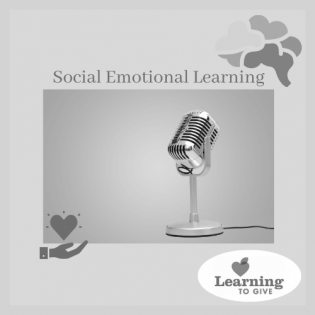SEL: Nonviolent Protest Simulation
SEL Connection:
- Self-Management: use planning and organizational skills
- Relationship Skills: identify solutions for personal and social problems; make a reasoned judgment after analyzing information, data, and facts
Warm-Up
Note: Before engaging youth in this activity, preview with a school social worker or counselor to talk about collaboration or to be aware of any areas of sensitivity.
- Define nonviolence as the use of peaceful means to protest against oppression, injustice, or discrimination
- Define activism as using vigorous campaigning to bring about political or social change
- Watch this video about John Lewis and nonviolent action.
This song was written and performed by Jaden, a ninth grade student and the 2019 winner of Flocabulary’s Black History Rap Contest. The song focuses on civil rights activist and US Representative John Lewis, a leader of the sit-ins, the Freedom Rides, and the fight for voting rights. Lewis remained dedicated to nonviolent action in the face of extreme violence and arrests.
Discuss the use of nonviolence and what kept people strong and committed to nonviolence.
Activity Instructions
- Distribute the Nonviolent Protest Simulation handout below. Review and discuss the steps together to create this simulation.
- Brainstorm possible nonviolent protest topics, narrowing the topics with this guide:
- List and discuss 2-3 social issues.
- Identify at least 2-3 facts as evidence that the issue exists.
- Identify potential solutions to selected social issues.
- Allow youth time to select a topic through discussion and research. The handout provides planning questions for a simulated protest event. They create an agenda and identify or make visual/auditory aids.
- Set a date for youth to share their simulation and visual and/or auditory aids.
Whole Group Discussion Questions
- What were some of the most interesting discoveries made while working on this project? About the problem? About yourself? About others?
- What were some of the most powerful learning moments and what made them so?
- How does your solution relate to real-world situations and problems?
- How will you use what you've learned in the future?
- What are some ways to share this learning with parents or family?
Self Reflection Writing Prompts
Writing Prompt: How can activism influence change? What are some ways for young people to take nonviolent action safely?
Wrap Up
Talk about the student activism following the Parkland shooting. This is a difficult topic because many precious lives were lost. Young people demanded action publicly and with great strength. Discuss the benefits and challenges of student activism in this case?
Extension
Further reading for youth about activism:
- March, a graphic novel by John Lewis
- Take the Mic by Behany C. Morrow
- The Hate U Give by Angie Thomas with a Learning to Give literature guide
